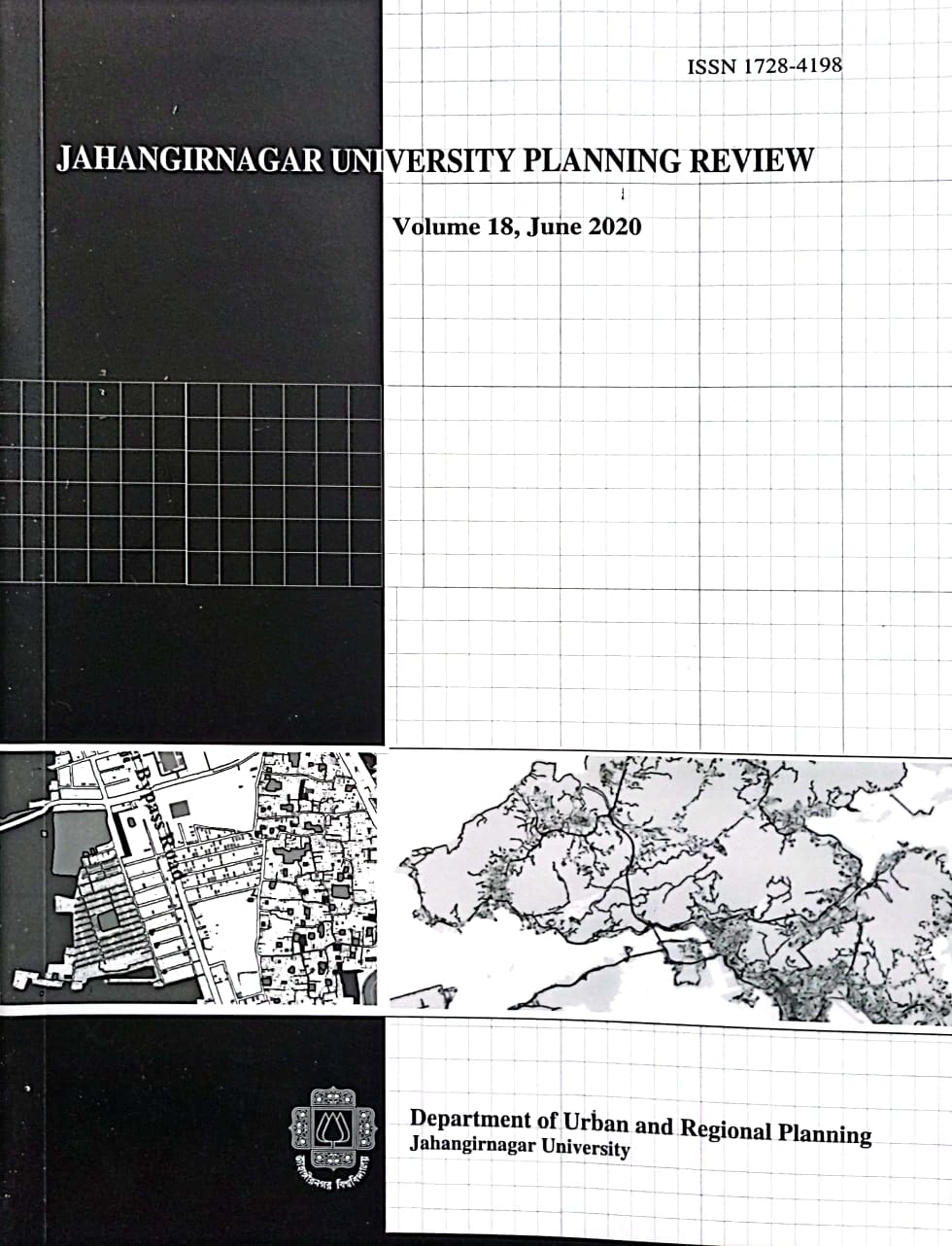Assessment of Climate Disaster Resilience Index of Dhaka City to Improve City Resilience Condition: A Case Study on Ward no. 29 of Dhaka South City Corporation
Main Article Content
Abstract
Dhaka city, the capital of Bangladesh is already facing the severity of climate related
hazards due to a very complex dynamics of disasters and climate change risks of this
city. It is predicted that among the mega-cities of the world, Dhaka would be one of the
most vulnerable place to climate change. Old Dhaka, the historic center of Dhaka city
has developed within a process of spontaneous growth. The characteristics of high
population density, unplanned settlements, large number of poorly built buildings,
contiguous building pattern, poor quality utility services, narrow lanes, loose soil and
filled soil, shortage of evacuation space, lack of disaster management equipment and
lack of open spaces not only make Old Dhakaa highly vulnerable place for earthquake,
fire hazard, building collapse and water logging, but also create inaccessibility of
movement, which will make any post disaster management even worse. Ward no. 29 of
Dhaka South City Corporation (DSCC) is the third most densely populated ward in
Dhaka City. Like other areas of the Old Dhaka, this area is also vulnerable for different
disasters. In the context of city, resilience helps to bridge the gap between disaster risk
reduction and climate change adaptation. The Climate Disaster Resilience Index (CDRI)
measures the capacity of a city’s infrastructure and services to withstand disasters and
evaluates how the communities and institutions within a city are expected to deal with
such an event. In these circumstances, this study attempts to measure the existing
resilience condition of Ward no. 29 of DSCC by CDRI. From the study, it is observed
that the study area has an overall CDRI score of 2.64, which indicates that the area is
moderately resilient. As the study area is moderately resilient, any sudden disruption
can causes great damage and makes the community more vulnerable. So, it is very
urgent to adopt a balanced and systematic approach to address this issue. In this
context, this research provides some important recommendations considering the
guidelines of ‘UNISDR 2013’ and ‘The Hyogo Framework for Action (HFA) 2005-2015’,
which can be helpful to improve the existing resilience condition of the study area as
well as other urban areas of the country

